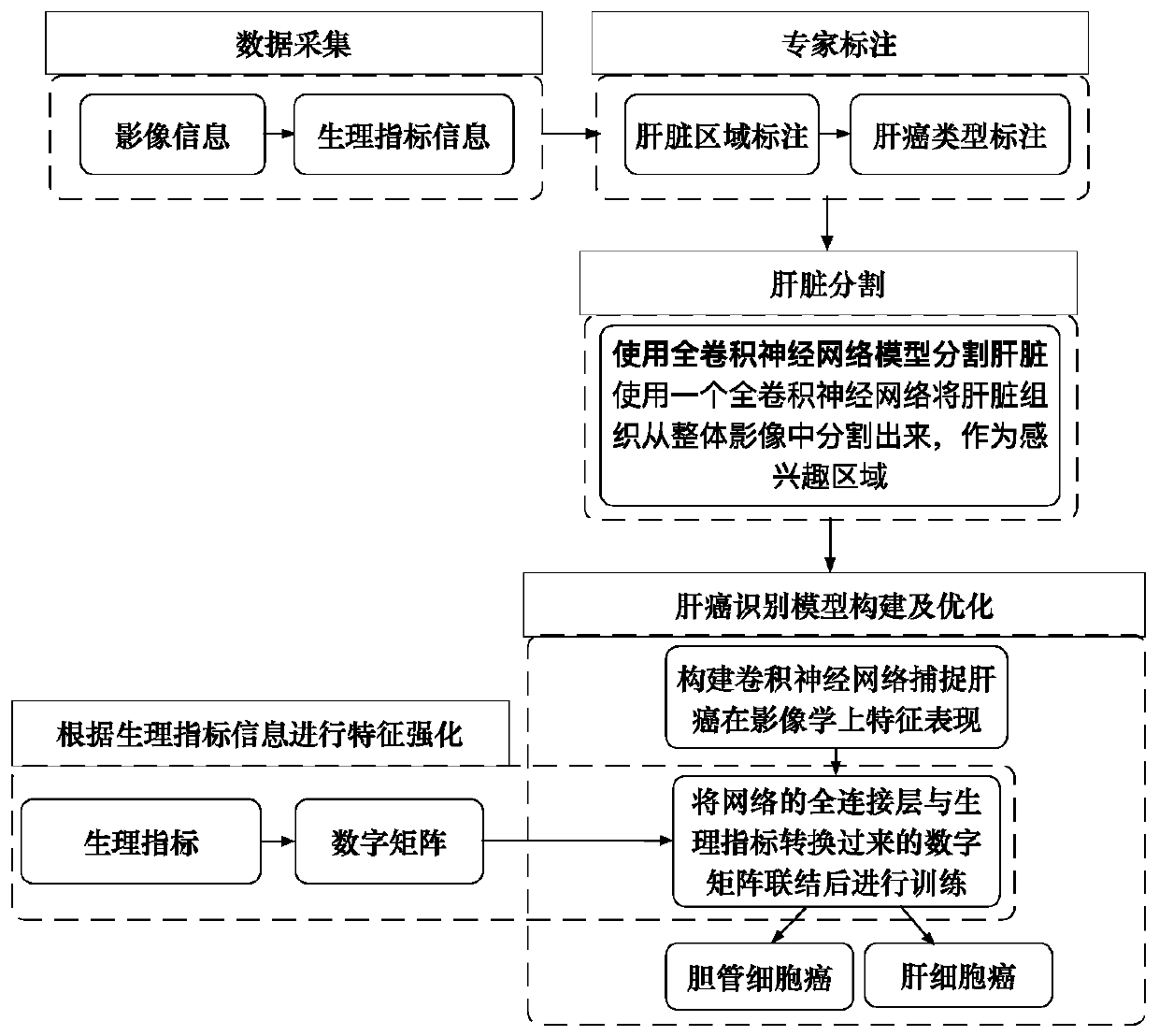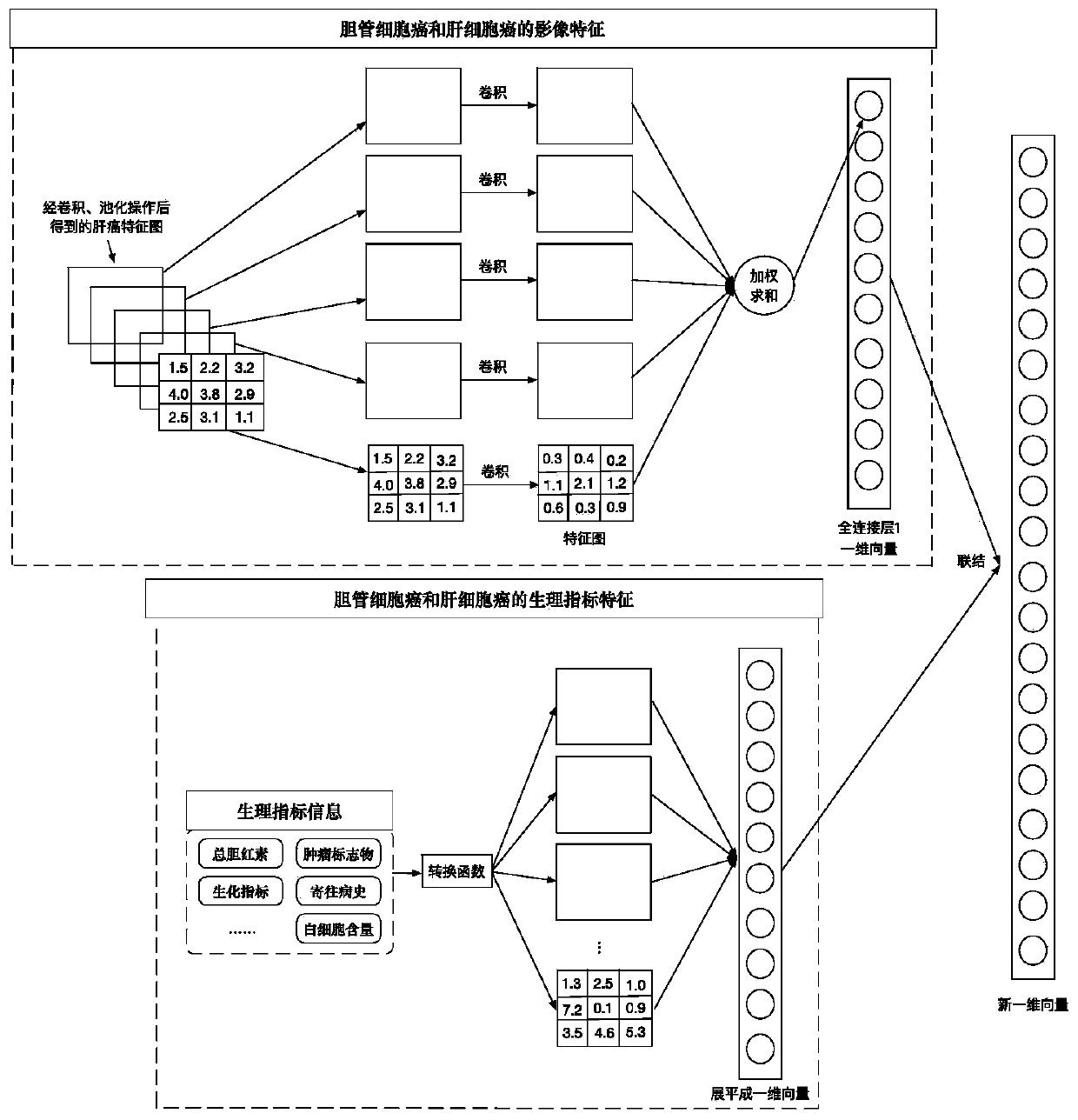Automatic liver tumor classification method and device based on physiological indexes and image fusion
A physiological index, image fusion technology, applied in the field of medical image processing, can solve the problems of improving the recognition rate, affecting the recognition performance, different tumor sizes, shapes, and positions, and achieving good robustness, automatic feature learning and extraction. , the effect of improving the recognition accuracy
- Summary
- Abstract
- Description
- Claims
- Application Information
AI Technical Summary
Problems solved by technology
Method used
Image
Examples
Embodiment Construction
[0025] Such as figure 1 As shown, this automatic classification method for liver tumors based on physiological indicators and image fusion includes the following steps:
[0026] (1) Build a database of images and physiological indicators of cholangiocarcinoma and hepatocellular carcinoma, collect abdominal CT images of patients and corresponding physiological indicators recorded by doctors;
[0027] (2) Label all the collected image data, outline the liver tissue area and judge whether it belongs to cholangiocarcinoma or hepatocellular carcinoma, and mark it well, as the gold standard for network training;
[0028] (3) Construct a three-dimensional fully convolutional neural network segmentation model, and use the image data of cholangiocarcinoma and hepatocellular carcinoma marked in the liver area in step (2) as the input of the model for learning, so that the model can automatically learn and extract liver tissue features, so that it can be segmented from the entire abdomi...
PUM
 Login to View More
Login to View More Abstract
Description
Claims
Application Information
 Login to View More
Login to View More - R&D
- Intellectual Property
- Life Sciences
- Materials
- Tech Scout
- Unparalleled Data Quality
- Higher Quality Content
- 60% Fewer Hallucinations
Browse by: Latest US Patents, China's latest patents, Technical Efficacy Thesaurus, Application Domain, Technology Topic, Popular Technical Reports.
© 2025 PatSnap. All rights reserved.Legal|Privacy policy|Modern Slavery Act Transparency Statement|Sitemap|About US| Contact US: help@patsnap.com



